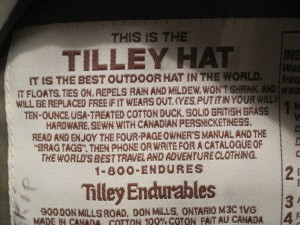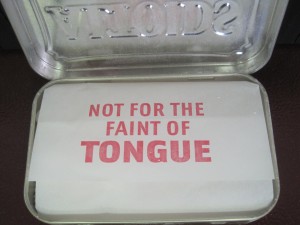How to Tell Your Branding Story in Your Product
There’s more to effective product branding and marketing than putting a logo on a label or box.
Telling a brand story through well-crafted marketing copy can capture the essence of a brand. And building those brand messages into the physical product itself can reinforce the brand’s value proposition every time the product is used.
Here are three consumer product marketers who are doing this brilliantly, and some branding advice for your smart marketing strategy.
How Three Marketers Make the Product a Brand Ambassador
1. Old Spice Classic Men’s Deodorant: Yes, it’s been around forever and it hasn’t changed much. But Old Spice has rejuvenated its brand with attention-getting TV ads and a branding strategy driven by its heritage.
Here’s the clever copy that appears on the product label of Classic Men’s Deodorant, where you see it every time you prepare to apply it: “If your grandfather hadn’t used this, you wouldn’t be here.”
While most of us don’t want to think about exactly how we got here, the underlying message – attractive men have always turned to Old Spice, and with great results – is the essence of Old Spice’s brand. And because it’s part of the physical product, it’s a can’t-miss marketing message.
 2. Tilley Endurables: Made in Canada, Tilley Hats are designed for people who enjoy outdoor life. The company positions its products as long-term investments in comfort and self-protection. So Tilley sews a fabric label inside every hat with a stitched message that reminds you why you spent so much money on a head covering.
2. Tilley Endurables: Made in Canada, Tilley Hats are designed for people who enjoy outdoor life. The company positions its products as long-term investments in comfort and self-protection. So Tilley sews a fabric label inside every hat with a stitched message that reminds you why you spent so much money on a head covering.
“This is the Tilley Hat,” says the label in the classic men’s version. “It is the best outdoor hat in the world. It floats, repels rain and mildew, won’t shrink, and will be replaced free if it wears out. (Yes, put it in your will.)” Boy, were you smart to buy a Tilley. And your kids will thank you, too.
The company’s Canadian roots also are crucial to its brand identity as a team of perfectionists up north who fuss over every detail of their products. The label also assures the user that the hat was “sewn with Canadian persnicketiness.”
 3. Altoids: Candy maker Callard & Bowser has built a phenomenal brand identity for Altoids, the “curiously strong mints” that are so potent they require a metal box. Inside each Altoids package is a paper liner that protects the product.
3. Altoids: Candy maker Callard & Bowser has built a phenomenal brand identity for Altoids, the “curiously strong mints” that are so potent they require a metal box. Inside each Altoids package is a paper liner that protects the product.
Clever Callard & Bowser realized that paper = messaging opportunity, but instead of boring copy, they print brand-centric messages on the liner that emphasize the powerful taste of Altoids and the courage of those brave souls who dare to enjoy them. “Not for the Faint of Tongue” and “Enter at Your Own Risk” are two examples.
Since a typical package of Altoids contains about 75 pieces, that’s up to 75 repetitions of the marketing message per pack. Not bad for adding a one-color message to a product liner that had to be there anyway.
Branding Advice for Your Smart Marketing Strategy
As a marketing consultant who helps companies plan branding and marketing strategies, I advise clients to see every space inside and outside the package as a potential opportunity to say something meaningful to the customer and restate the brand promise.
I also believe that product packaging is most effective as a branding and marketing strategy when the message is delivered via the actual product itself – not just the wrapper it comes in. Building the brand message into the physical product can make the product itself a brand ambassador.





Pingback:Bookmarks for October 14th from 09:11 to 09:28 « Mark's life
Bren Murphy
Hi Jean, I like your idea of putting the brand into the product – so it is actually part of the product – not something added on. This organic integration means the product and the customers idea of when to use the product blur into the same thing – making the product so much more. Awesome!
Thanks
Bren
jeangianfagna
Exactly, Bren-in fact, I think you’ve said it even better than I did. Thanks for reading and for sharing your comments.